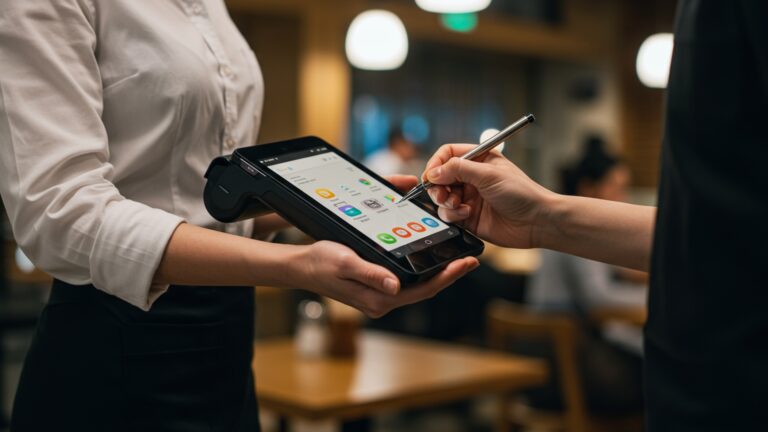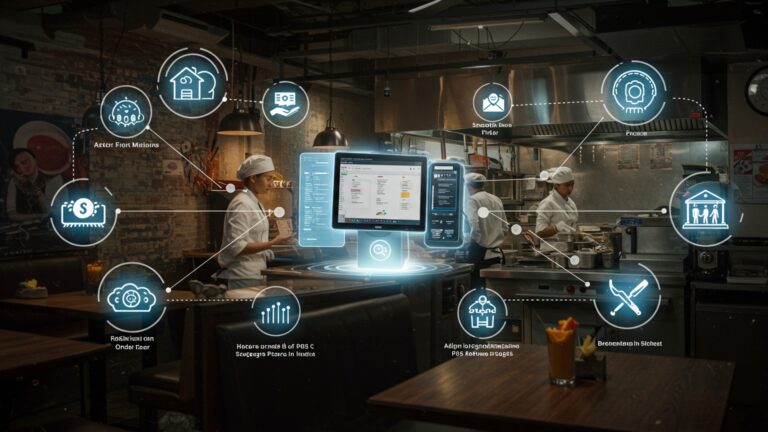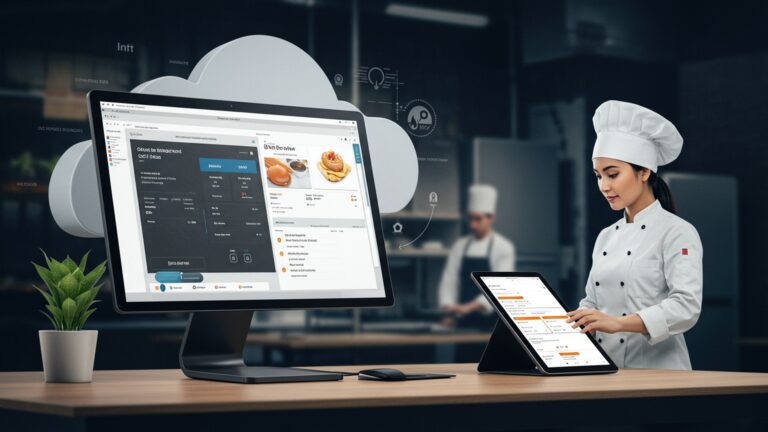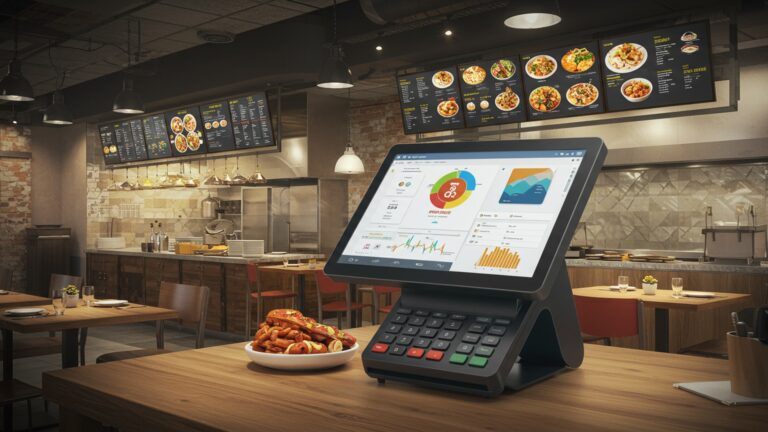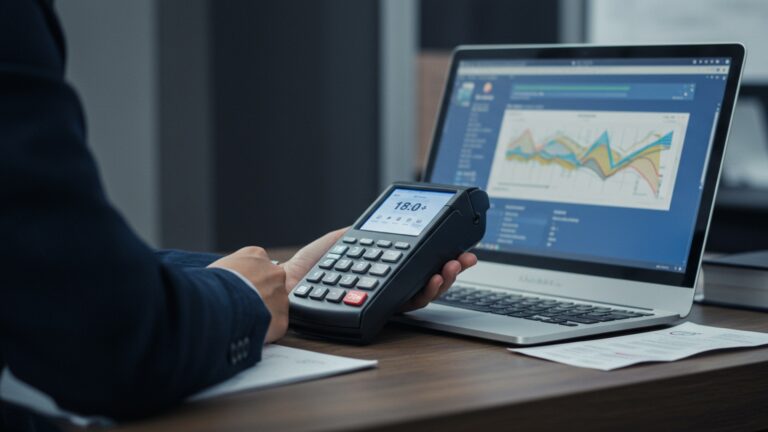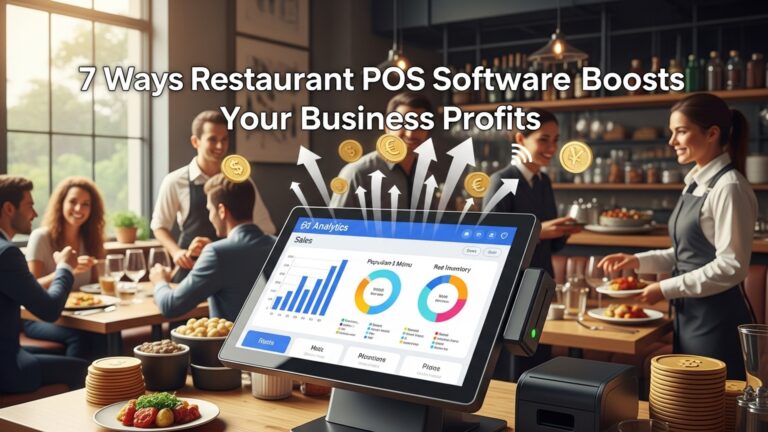10 Key Benefits of Restaurant POS Software India for Seamless Operations
In India’s dynamic and fiercely competitive hospitality sector, simply managing orders is no longer enough; restaurants now demand sophisticated tools to thrive. The rapid adoption of digital payments like UPI and the surge in online delivery platforms have made efficient back-end integration crucial for survival. Modern Restaurant POS software in India has evolved far beyond basic billing, emerging as a central nervous system that streamlines operations from inventory management and kitchen display systems (KDS) to real-time sales analytics and customer relationship management. This intelligent integration empowers establishments, from bustling QSRs in Mumbai to fine-dining experiences in Bangalore, to enhance service speed, minimize waste. navigate the complexities of GST compliance, ultimately driving profitability and elevating the customer journey in an increasingly tech-savvy market.
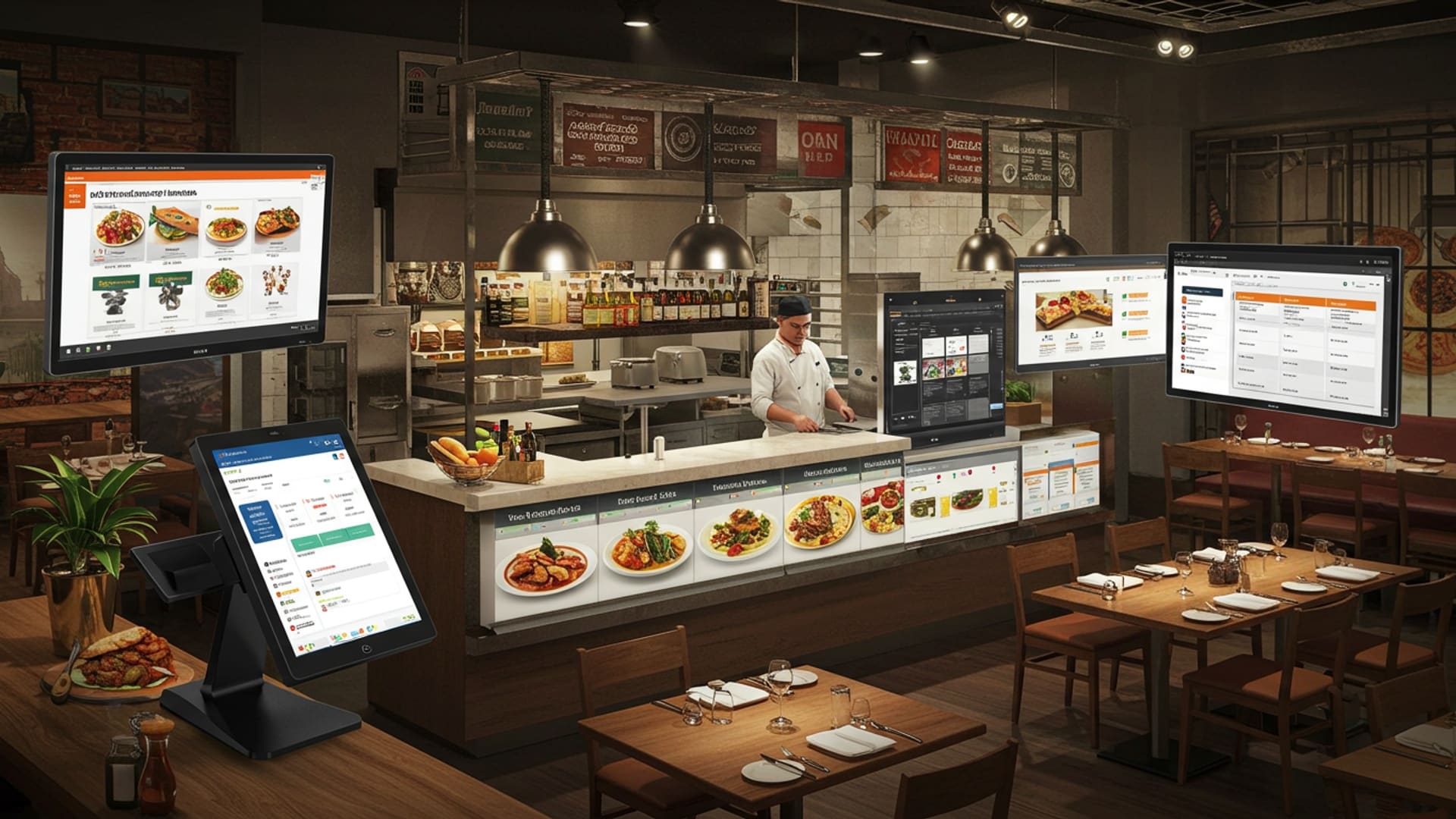
Streamlined Order Management
One of the most immediate and impactful benefits of adopting Restaurant POS software India is the dramatic improvement in order management. In the bustling environment of an Indian restaurant, from quick-service eateries to fine dining establishments, efficiency at the point of sale is paramount. Traditional manual ordering systems, often involving handwritten KOTs (Kitchen Order Tickets), are prone to errors, delays. miscommunication between front-of-house and back-of-house staff.
A modern POS system digitizes this entire process. Waitstaff can take orders directly on handheld devices or fixed terminals, which are then instantly communicated to the kitchen display system (KDS) or printer. This eliminates legibility issues and ensures accuracy. For instance, imagine a busy lunch hour in a South Indian restaurant; a waiter can quickly input a complex dosa order with specific customisations. the kitchen receives it perfectly, reducing preparation time and customer waiting periods. This real-time synchronization significantly boosts service speed and customer satisfaction, making operations seamless.
Enhanced Billing and Payment Processing
In today’s diverse payment landscape, offering multiple secure and swift payment options is non-negotiable for any successful restaurant in India. Restaurant POS software India excels in this area by integrating various payment gateways and methods directly into the billing process. This includes traditional cash, credit/debit cards. the increasingly popular UPI (Unified Payments Interface) options like Google Pay, PhonePe. Paytm, which are essential for the Indian market.
The software allows for flexible billing scenarios such as splitting bills by item or by person, applying discounts. managing loyalty points, all with just a few taps. This not only enhances customer convenience but also improves transactional accuracy and reduces checkout times. For example, a group of friends dining out can easily split their bill, with each person paying their share through their preferred digital method, all managed effortlessly by the POS. Moreover, integrated payment processing often comes with enhanced security features, safeguarding both the restaurant and its customers from potential fraud.
Efficient Inventory Management
For any restaurant, food costs are a major component of operational expenses. Inefficient inventory management can lead to significant waste, pilferage. lost revenue. Restaurant POS software India provides robust tools to meticulously track ingredients, semi-finished goods. finished dishes, ensuring optimal stock levels and minimizing spoilage.
- Real-time Tracking: Every sale automatically deducts ingredients from inventory, providing an accurate, up-to-the-minute view of stock levels. This is crucial for managing perishable items common in Indian cuisine.
- Automated Alerts: The system can be configured to generate alerts when certain ingredient levels fall below a predefined threshold, prompting timely reorders. This prevents stockouts of popular items, like paneer or specific spices, which could otherwise disappoint customers.
- Waste Reduction: By precisely tracking consumption, restaurants can identify patterns of waste or over-portioning, allowing for corrective measures. It helps in understanding dead stock (items that don’t sell) and slow-moving items.
- Recipe Management: Many POS systems allow for recipe costing, helping restaurateurs grasp the true cost of each dish, which is vital for profitability and menu pricing strategy.
Consider a multi-cuisine restaurant; tracking hundreds of ingredients manually is nearly impossible. A POS system automates this, providing actionable insights that can lead to substantial savings, often reducing food waste by 10-15% and improving profit margins.
Improved Customer Relationship Management (CRM)
Building a loyal customer base is crucial for long-term success in the competitive Indian food industry. Restaurant POS software India often includes powerful CRM functionalities that help restaurants grasp their customers better and foster repeat business. By capturing customer data at the point of sale – such as contact details, order history. preferences – restaurants can create personalized experiences.
- Personalized Offers: Based on past orders, the system can suggest personalized promotions or dishes. Imagine a customer who frequently orders biryani receiving a special discount on their next biryani order.
- Loyalty Programs: Integrated loyalty programs allow customers to earn points for purchases, which can be redeemed later, encouraging repeat visits. This is particularly effective in India where consumers appreciate value.
- Feedback Collection: Some POS systems facilitate direct feedback collection, enabling restaurants to address concerns promptly and improve service quality.
This data-driven approach allows restaurants to move beyond generic marketing to targeted engagement, making each customer feel valued and understood, thereby enhancing brand loyalty and word-of-mouth referrals.
Detailed Sales Reporting and Analytics
One of the most powerful tools a modern restaurant can possess is access to comprehensive, real-time sales data. Restaurant POS software India transforms raw transaction data into actionable insights through detailed reports and analytics. This moves beyond simply knowing what sold, to understanding why, when. to whom.
- Peak Hour Identification: review sales trends to identify the busiest times of the day or week, allowing for optimized staffing and resource allocation.
- Popular Dish Analysis: Pinpoint best-selling dishes and those that are underperforming. This informs menu engineering decisions – whether to promote, adjust pricing, or remove certain items.
- Employee Performance: Track individual employee sales performance, which can be used for training, incentives. operational adjustments.
- Revenue Breakdown: comprehend revenue streams by category (e. g. , dine-in, takeaway, delivery), payment method. time period.
For example, a cafe owner in Bangalore can use POS analytics to discover that their filter coffee sales peak between 8 AM and 10 AM. their evening snacks are most popular on weekends. This insight allows them to strategically schedule staff, manage inventory for specific items. even tailor marketing campaigns, leading to improved profitability and operational efficiency. Manual reporting simply cannot offer this depth or speed of analysis.
Workforce Management and Performance Tracking
Managing staff effectively is crucial for smooth restaurant operations, especially in India where labor costs and efficiency are key considerations. Restaurant POS software India often includes features that simplify workforce management, from scheduling to performance monitoring.
- Time & Attendance: Employees can clock in and out directly via the POS system, accurately tracking their work hours and reducing payroll discrepancies. This eliminates manual time sheets and ensures compliance.
- Shift Scheduling: Some advanced systems offer tools to create and manage staff schedules, considering peak hours (identified through sales analytics) and employee availability.
- Performance Monitoring: Beyond just sales data, the POS can track individual staff performance metrics, such as average order value, speed of service, or customer feedback linked to specific servers. This provides an objective basis for performance reviews and identifying training needs.
By streamlining these administrative tasks, managers can dedicate more time to customer service and operational oversight, rather than getting bogged down in paperwork. This leads to a more productive and accountable team, which directly impacts the overall customer experience.
Menu Management Flexibility
The dynamic nature of the Indian food scene, with its seasonal ingredients, daily specials. evolving customer preferences, demands a highly flexible menu management system. Restaurant POS software India provides unparalleled ease in updating and controlling menus across single or multiple outlets.
- Instant Updates: Prices, dish descriptions. availability can be updated in real-time across all POS terminals. This is invaluable for daily specials, stock-out items, or promotional changes.
- Seasonal Menus: Easily switch between different menu versions – for instance, a special Diwali menu or a summer drinks menu – without needing to reprint physical menus or manually update systems.
- Centralized Control: For restaurant chains, a cloud-based POS allows for centralized menu management. A change made at the head office can instantly propagate to all branches, ensuring consistency and reducing administrative overhead.
This flexibility not only saves time and printing costs but also ensures that customers always see the most current and accurate menu insights, preventing confusion and enhancing their dining experience.
Reduced Operational Costs and Waste
Cost control is a constant challenge for restaurant owners. Investing in Restaurant POS software India can lead to significant reductions in operational costs and waste across several areas, contributing directly to the bottom line.
- Minimizing Errors: Automated ordering and billing drastically reduce human errors that lead to wasted food (wrong orders), lost revenue (incorrect billing), or customer dissatisfaction.
- Optimized Inventory: As discussed, precise inventory management reduces spoilage, pilferage. over-ordering, directly impacting food costs.
- Labor Efficiency: By automating tasks like order taking, billing. reporting, staff can focus on higher-value activities like customer service, potentially reducing the need for additional administrative hires. Employee clock-in/out features ensure accurate payroll, preventing overpayment.
- Reduced Paperwork: Moving to digital KOTs, bills. reports saves on printing costs and storage, contributing to a more sustainable operation.
These cumulative savings, often overlooked individually, can add up to a substantial improvement in profitability over time. A restaurant in Chennai, for instance, might find that by reducing food waste by even 5% and improving billing accuracy by 2%, their monthly savings are significant.
Seamless Integration with Other Systems
A truly powerful Restaurant POS software India is not an isolated solution but an integral part of a larger ecosystem of business tools. Its ability to seamlessly integrate with other essential software streamlines operations further and creates a holistic view of the business.
POS System ↓ Accounting Software (e. g. , Tally, Zoho Books) ↓ Online Food Delivery Platforms (e. g. , Swiggy, Zomato) ↓ CRM & Loyalty Programs ↓ Inventory Suppliers
- Accounting Integration: Sales data, expenses. inventory movements can be automatically synced with accounting software, simplifying bookkeeping, tax preparation. financial analysis. This reduces manual data entry errors and saves countless hours for the finance team.
- Online Delivery Platforms: Many modern POS systems offer direct integration with popular Indian food delivery aggregators like Swiggy and Zomato. Orders placed on these platforms flow directly into the POS, centralizing order management and preventing missed orders or manual input errors.
- Supplier Management: Some systems can integrate with supplier databases for automated reordering, streamlining the procurement process.
This interconnectedness ensures that all aspects of the business are working in harmony, providing a comprehensive and accurate picture of financial health and operational performance.
Scalability and Future-Proofing
For any ambitious restaurant owner in India, the ability of their core systems to grow with their business is paramount. Restaurant POS software India offers inherent scalability, making it an ideal long-term investment that can adapt to future expansion and technological advancements.
- Multi-Outlet Management: As a restaurant expands from a single outlet to multiple branches, a cloud-based POS system can effortlessly manage all locations from a central dashboard. This includes unified menu management, inventory control. consolidated reporting, providing a bird’s-eye view of the entire enterprise.
- Adapting to New Technologies: Modern POS systems are designed with flexibility in mind, making it easier to integrate new payment methods (e. g. , digital wallets, cryptocurrencies if they become mainstream), new hardware, or emerging operational tools.
- Cloud-Based Advantage: Cloud-based solutions (common for Restaurant POS software India) mean that updates, security patches. new features are automatically rolled out by the provider, ensuring the system remains current and secure without requiring significant investment from the restaurant owner. This also provides data backup and accessibility from anywhere.
By choosing a robust and scalable POS solution, restaurants are not just solving today’s problems but are also laying a strong foundation for future growth and ensuring they remain competitive in India’s ever-evolving hospitality landscape.
Conclusion
Embracing robust POS software is no longer a luxury but a fundamental necessity for Indian restaurants striving for operational excellence and sustained growth. It’s about transforming daily chaos into streamlined efficiency, from managing inventory and staff to processing payments and customer feedback. My personal experience, having witnessed countless restaurants struggle with manual processes during peak festival seasons like Diwali, confirms that a well-chosen POS system is the silent backbone supporting seamless service even under immense pressure. To truly leverage these benefits, don’t just install a system; integrate it deeply into your workflow. As a practical tip, always prioritize solutions that offer strong cloud capabilities and mobile accessibility, reflecting the current trend of remote management and instant data access that became so crucial post-pandemic. Take the proactive step to invest in comprehensive staff training, ensuring every team member can utilize its full potential. This strategic move isn’t just about saving money; it’s about future-proofing your business, enhancing customer satisfaction. empowering your team. Your restaurant’s journey towards unparalleled success in India begins with this smart, foundational technology.
More Articles
Master 5 Ways Online Ordering POS Boosts Your Restaurant Sales in India
7 Essential POS System Features Small Indian Restaurants Need to Thrive
How to Choose The Best Restaurant Billing Software India 5 Key Steps
Discover How POS Billing Software Transforms Your Business Operations
FAQs
My restaurant gets super busy! How can a POS system help us handle the rush faster?
A good POS system streamlines everything from order taking to billing. Your staff can punch in orders quickly, send them straight to the kitchen. generate bills in seconds. This means less waiting for customers and smoother service, especially during peak hours.
Is it really good for keeping tabs on all my ingredients and stock?
Absolutely! It offers robust inventory management features. You can track ingredients in real-time, get alerts for low stock. even manage recipes. This helps reduce waste, prevent theft. ensures you never run out of popular items, saving you money.
Can a POS actually cut down on order mistakes and billing errors?
Yes, significantly. By digitizing the process, you minimize manual errors in order entry and calculations. Orders go directly to the kitchen display system, reducing miscommunications. automated billing ensures accurate charges every time, leading to happier customers and less hassle.
I want to comprehend my business better. What kind of reports can I get?
You’ll get a treasure trove of data! POS software provides detailed reports on sales trends, popular dishes, peak hours, staff performance. more. These insights are crucial for making smart decisions about your menu, pricing, staffing. future promotions.
How does it help improve things for my customers or build loyalty?
It makes things smoother for them – faster service, accurate bills. easier order placement. Plus, many systems include CRM features, letting you track customer preferences, run loyalty programs. offer personalized discounts, which keeps them coming back.
Can this system integrate with all those online food delivery apps we use in India?
Most modern POS systems are designed to integrate seamlessly with popular online ordering platforms and food delivery aggregators common in India. This consolidates all your orders into one place, simplifying management, avoiding missed orders. expanding your reach.
What about managing my staff? Does it help with that?
Definitely. You can set up user roles and permissions, track clock-in/clock-out times. monitor individual staff performance. This helps with payroll, identifying top performers. ensuring accountability across your team, making staff management much easier.

